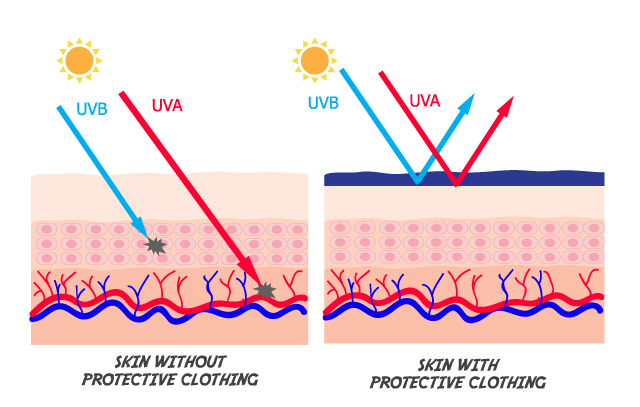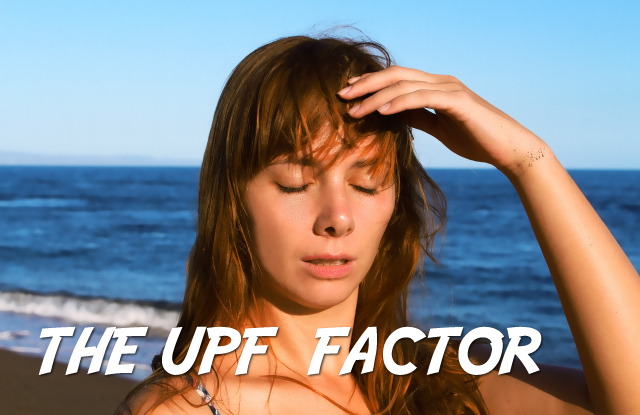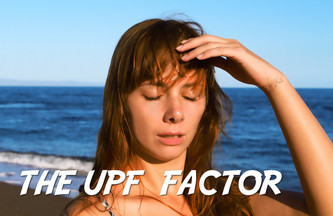25th Aug 2016
The Importance Of Wearing Protective Clothing In The Sun
How UV clothing protects you from harmful sun rays?
Most of us and our children enjoy life in the sun. However, if we do not ensure we have adequate UV protection clothing we risk over-exposing ourselves and our family to harmful UV radiation. This is a factor that may not only cause damage to our health in the short-term; such as sunburn, sun spots and wrinkles, but also in the long-term. This extended risk factor has the potential to be life-changing, with ultraviolet radiation increasing the likelihood of skin damage that could cause skin cancer. But, it doesn’t stop there. In addition to these grave dangers damage to the eyes may occur, which could result in cataracts.
How to enjoy life in the sun
It is a natural part of our lives and those of our families that we need to work, play and be active in the outdoors, but it’s also a fact of life that we need protection from the harmful ultraviolet rays (UVR) of the sun. Although the clothing we wear is generally recognised as being the most basic and typically best means of sun protection, not all clothing can be regarded as being equally suitable for our protection. Therefore, what does it take to make ourselves safe from the sun with the right UV protection clothing?
The majority of us do not realise that exposure to UVR from the sun to the exposed parts of our bodies has a cumulative effect during our lifetime. It is a process that is ongoing and continually increases the risks of premature ageing and skin cancer. Therefore, it is logical that the larger area of your skin covered, the better, and safer it is for your body, overall health, and wellbeing. When relating this factor to UV protection clothing; a long-sleeved shirt covers and offer more protection than a T-shirt, particularly if the design includes a high neckline or collar that protects the back of your neck. Continuing in that context, it follows that long trousers effectively cover a larger area of skin, as does a wide-brimmed hat and close-fitting wraparound sunglasses.
Facts about UV protective clothing

When reviewing the advantages of UV protection clothing it may be similar to protection against the rain. You can have clothing over part of your body; however, if the rain or the UV rays penetrate straight through, then you are wasting your time and effort. Fabrics for UV protection clothing are produced from minute fibres that are woven or knitted together. If you view them under a microscope, you will observe a relatively large volume of space between these fibres; through which the UV rays can pass, to the skin. Accordingly, the tighter the knit or weave, the smaller the space for UV penetration and greater is your protection.
UV protection clothing fabrics
Fabrics associated with UV protection clothing are made from various types of fibres, including cotton, nylon, and wool. The majority of fibres are capable of absorbing a certain degree of UV radiation, with some having elastic threads designed to tighten the fibres together, thereby restricting spaces between the holes. Synthetic fibres; for example, lycra, nylon, polyester and acrylic offer greater protection than bleached cotton and lustrous or shiny semi-synthetic fabrics, such as rayon. The reasons stated are they reflect more UV rays than do matte ones. However, another influencing factor in the question of UV protection clothing is the weight of the fabric and its density. An example of this is that light, sheer silk gauze will give you significantly less protection from UV rays, than heavy cotton denim.
If this seems to be a complex and difficult decision-making issue, then there is a solution and convenient method of choosing your UV protection clothing. The Ultraviolet Protection Factor (UPF) was conceived in Australia and originally standardised in about 1996, with the purpose of quantifying the degree of effectiveness relating to clothing protection against the rays of the sun. It is a highly respected label on a garment confirming the fabric has been subjected to testing in laboratory conditions. It further underlines that consumers can be confident regarding the stated level of protection provided by the clothing.
The UPF factor

The findings of the laboratory testing are founded on content, weight, colour, and construction of the fabric, with an indication given as to the amount of UV rays able to penetrate the fabric. For example; a garment with a UPF rating of 50 permits only 1/50th of radiation from the sun to reach your skin. It is a rating that would offer you excellent UV protection clothing. This is in direct contrast to a thin white cotton shirt, with a UPF rating of approximately 5. This would allow 1/5th of the UV rays from the sun onto your skin and an even larger volume in wet conditions. The situation of surrounding UV protection clothing could revolve around the question of taking precautions now and gaining the benefits in your future.



